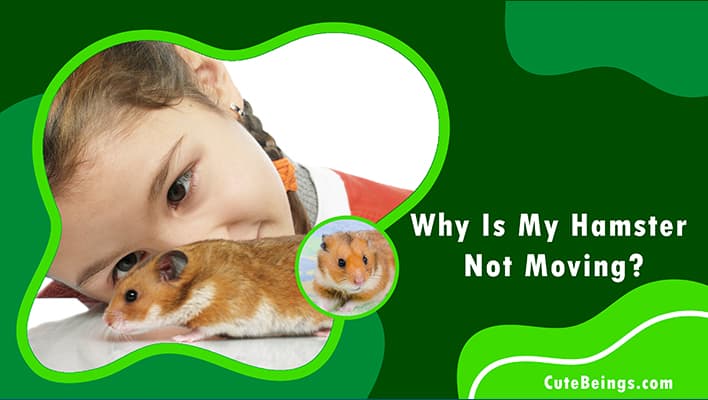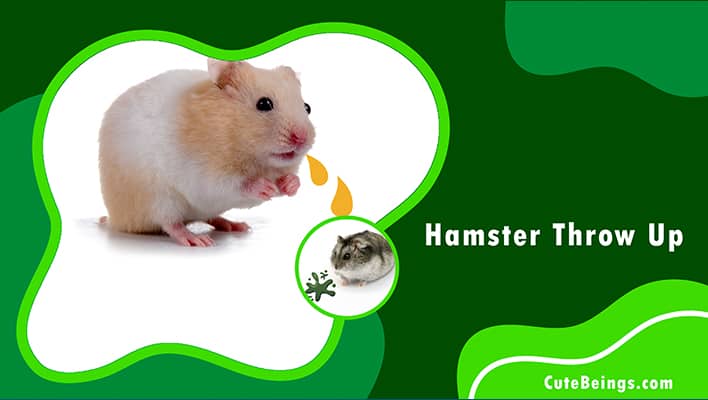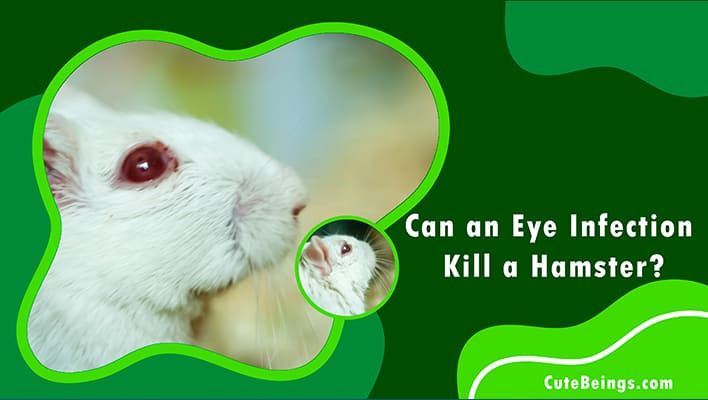When I got my first pet hamster, I did not know anything about hamsters and their behavior. It took me some time to learn how to take care of these cute pets. This is not a hard task. But you should know these things before taking a hamster home.
Table of Contents
Handling
Even though hamsters detest being carried, it is still advantageous for them to interact with people. Handling them should be the first step, and you should give them a tiny treat. Once they appear at ease, continue doing this for a few days or a week.
Since hamsters have such little bodies, picking them up should include scooping them into your hand so they are just resting on your hand. Make sure your hands are close to or on the ground so that if they try to flee, it won’t be a big fall.
When kept for an extended period of time (more than a few minutes), hamsters will begin to look for an opportunity to bite you. Hamsters definitely enjoy biting.
Create a space where your hamster may play and run around freely outside of his cage (excellent exercise). Every day for 20 minutes, the veterinarian advises playing outside the cage.
Diet and feeding
Contrary to popular belief, hamsters do not just eat nuts and veggies and are not vegans. They are omnivores. Meat is edible to hamsters. Unseasoned cooked chicken as well as bugs and worms are both tasty treats.
Aside from pellets, seeds, and dried fruits and vegetables, hamsters also require a variety of nourishing diets. You can feed your hamster a variety of vegetables, but make sure you know which ones are safe. Cucumber, a little bit of cabbage, and carrots, for instance, are all good, but you must never offer your hamster citrus or onions.
Cage
A cage made specifically to house hamsters are called a hamster cage. Hamster cages must have a minimum of 600 square inches of floor space or more, though many experts, including Gernot Kuhnen, believe that larger cages are best for hamster growth. Commercially available pens for pet hamsters are made of wire or plastic.
Some pet owners build their own wooden enclosures or keep their hamsters in aquarium tanks. Hamsters are kept in pens at laboratories that are intended for scientific use.
Every day, you must empty the hamster’s cage. Try to locate all of his stored food while removing waste and replacing soiled bedding. Once a week, empty the cage of all the shavings, discard them, wash it with warm, soapy water, and replace the bedding with new shavings.
Water Bottle or bowl
Hamsters are not very good at sucking. Make sure the water container you buy for their cage is very easy for them to draw from. The ability of a hamster to draw out adequate water can be hampered by conventional ball valve sipper tubes. The preferable option is a water bottle with a pinch in the tube.
Bedding
Two types of bedding are never appropriate for hamsters. They may result in a variety of health issues, including intestinal blockages, liver and respiratory damage, and many others. Never use linens made of pine or cedar.
Also not advised is fluffy bedding because it can entangle their limbs and even cause them to break one. Veterinarians advise using Aspen bedding or Care Fresh bedding.
Remove all the bedding once a week, wash the cage with a hamster-safe cleaner, and replace it with all new bedding. Contrary to what you may have been told, the hamster requires daily cage cleaning. Take most of the food that has been stashed away and save some for a snack for them. Remove bedding and animal waste, or wash and replenish the sand bowl.
Health
Common Illnesses
One of the most prevalent digestive system issues in hamsters is diarrhea, which can be brought on by a variety of diseases. Hamster diarrhea is commonly referred to as “wet tail.” Another typical digestive issue in hamsters is constipation. Aside from digestive issues, they may also have the following diseases.
- Wet Tail
- Colds
- Mange
- Runny Eyes
- Dry Ears
- Fleas and Lice
- Lumps and Bumps
- Paralysis
- Cuts And Scrapes
- Circling
- Dehydration
- Parasites
- Respiratory Infections
- Strokes
- Urinary Problems
Temperature
Although different hamster species have slightly varied requirements, you should generally keep Little hamster’s habitat between 65 and 75 degrees. Hamster needs to be in a location with adequate ventilation but that isn’t too drafty.
Teeth
Because they consume so much extremely hard food, hamsters place a high value on their teeth. Your hamster may have broken one of its teeth if it has stopped eating or has blood around its mouth. Gently check your hamster’s teeth while holding them to see if one of them has recently become much shorter. Because there is nothing in the way, has one of the teeth on the opposing side grown longer than it should have? If you suspect tooth loss or injury, take your pet to the vet right away. A sore or missing tooth will affect your hamster’s nutrition. Losing a tooth can lead to the opposite tooth growing unusually long, which could potentially harm your hamster’s mouth.
Annual Healthcare
The health of your hamster must be maintained with yearly veterinary visits. Your veterinarian will conduct a comprehensive examination, note your hamster’s weight, look for dental disease, and go through feeding and care. They can also help with nail care and early detection of medical issues.
Safety
Regardless of the type of hamster you own, they all need the same level of maintenance to stay secure in your house. You should concentrate on these safety tips
Secure cage
Quite home : It’s best to keep hamsters in a quiet area of your house because noise can stress them out.
Regularly cleaning: Depending on the kind of cage you keep your hamster in, you should change her bedding completely once a month and spot-clean it once a week (removing feces).
Supervise children
Safe bedding
Exercise \ Toys
Install a wheel
A wheel in the cage is recommended for hamsters and is typically thought to be necessary. A wheel allows a hamster to run and travel up to 5 miles (8 kilometers) per day, which is the distance they would typically travel in the wild.
Install a Flying Saucer Hamster Wheel
Flying saucers, if you choose, are great for the occasional game of recreational fun and won’t damage your pet if used in the right way. However, they shouldn’t be utilized in place of a conventional, upright wheel or offered without restrictions. activities
Hideouts / enrichment
Toys are a favorite pastime for hamsters, who use them for a range of purposes, including chewing, climbing, exploring, burrowing, and hiding. To provide enrichment for their hamsters, many hamster owners utilize paper bags, cardboard boxes with holes cut out, hideaways, and paper towel rolls. Solid connecting tunnels can also enrich the environment, but they need to be cleaned every week.
Frequently Asked Questions (FAQ)
Should Syrians be housed together?
However, Syrians have a history of becoming highly hostile to visitors to their country. Syrians can become injured or perhaps die if they are kept together in an enclosure with other Syrians. So do not keep them together.
Should Males and females be housed together?
Always keep male and female hamsters apart for the following reasons:
- They could fight.
- They could reproduce.
The male and female of your hamsters should be kept in separate enclosures, even though you might desire to breed them. Hamsters reproduce extraordinarily quickly, and after the young are born, there is a chance that the father will eat them. The mother could then assault him to protect her young.
Have you ever considered how a hamster might coexist with another pet?
Before bringing a hamster home you should know, most common home pets, including other hamsters occasionally, do not get along with hamsters. Many dwarf hamsters will be happy to have a friend, but the new hammy needs to be neutered or the same gender as the old one. Otherwise, getting hamsters to get along with dogs and cats can be extremely difficult.
What is included in the hamster starter kit?
Includes a house, a wheel for exercise, a food dish, Fresh’N Comfortable Bedding, Classic Food for Hamsters, tasty treats, a water bottle, and a chew toy. All you need to do is snap the pieces together; no tools are needed!

Hello, my name is James and I’ve been caring for tiny pets for over 14 years with a passion. I enjoy passing on my expertise to other individuals in order for them to have the same amount of enjoyment as I do.




